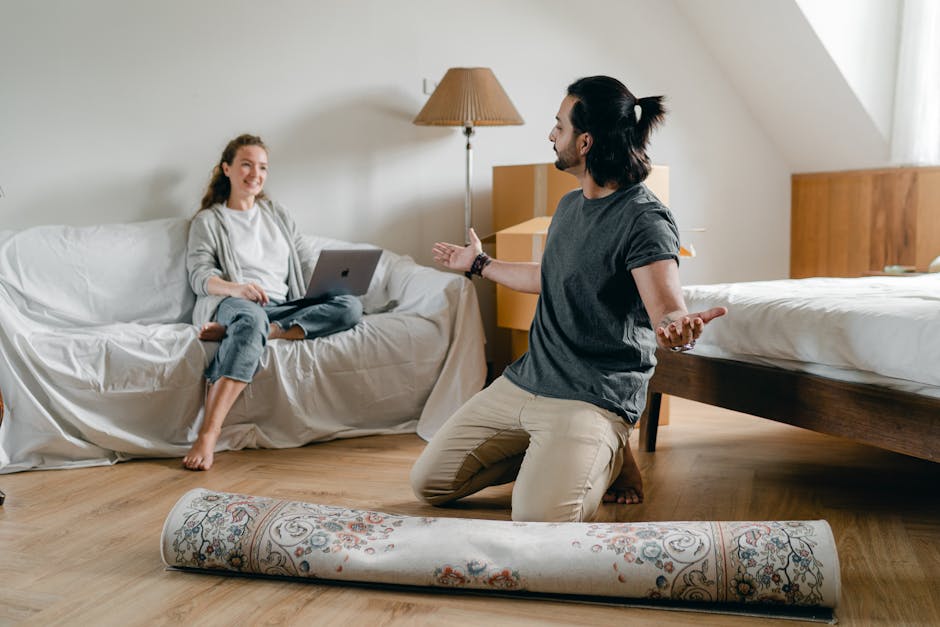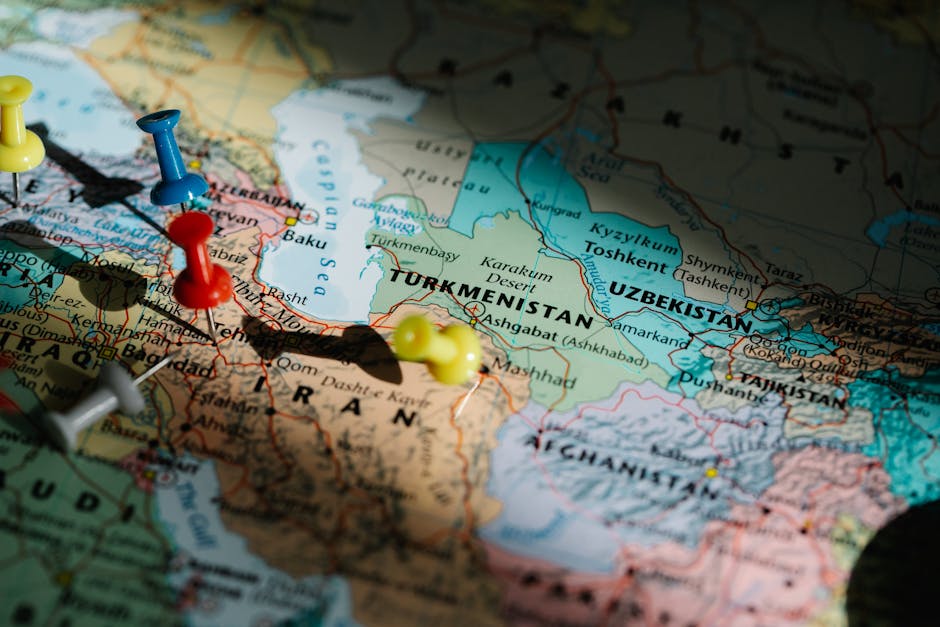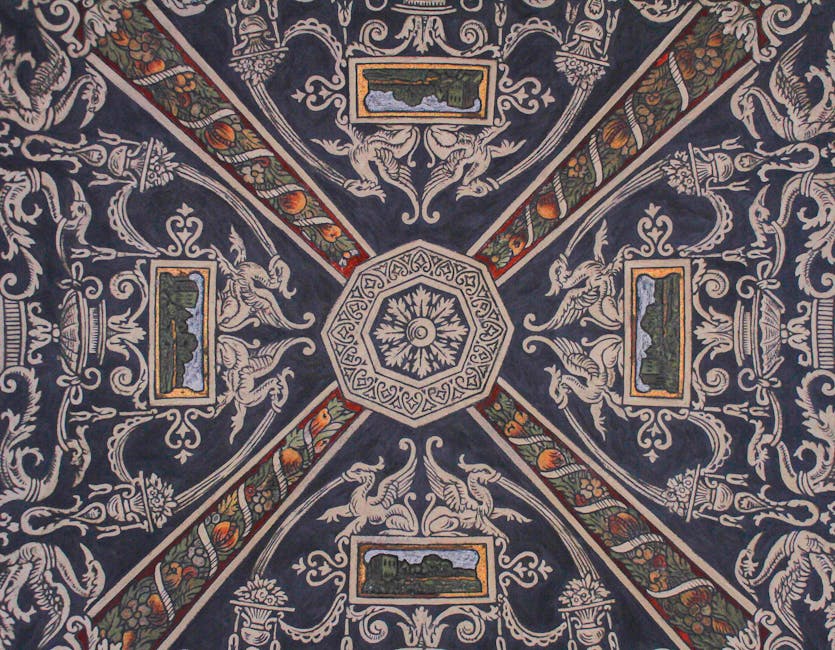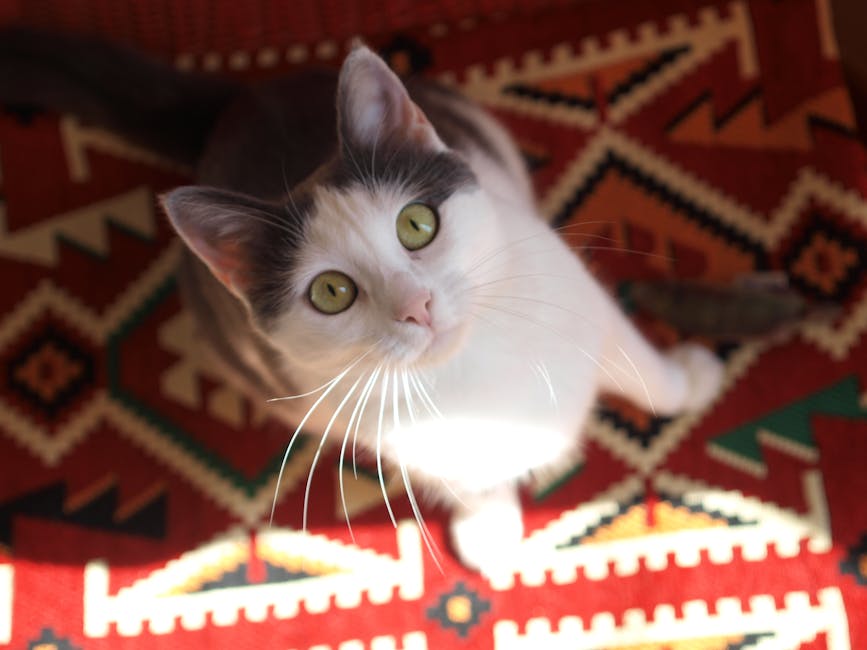Buyer's Guide: Best Persian Rugs for 2024
Looking to buy a Persian rug in 2024? Here's a quick start:
- History & Craftsmanship: Persian rugs, with a legacy stretching back over 2,500 years, represent a pinnacle of artisan skill and cultural heritage.
- Timeless Elegance: These rugs embody elegance that surpasses fleeting design trends, fitting seamlessly into both traditional and modern spaces.
- Artisan Craftsmanship: Each rug is meticulously hand-knotted, showcasing intricate designs and patterns unique to its maker's vision.
Persian rugs are not just floor coverings; they are tales of history, showcasing the rich tapestry of Persian culture. Their timeless elegance and artisan craftsmanship have made them a beloved addition to homes and collections worldwide. Whether woven in the silk-using urban centers or embodying the rustic charm of village or nomadic pieces, each rug carries the story of its origins. From the intricate floral motifs of urban designs to the bold geometric patterns of tribal weavings, Persian rugs offer a range of styles to fit any aesthetic.
For those intending to make such an investment, understanding the history, durability, aesthetic appeal, and cultural significance of these pieces can significantly enhance the selection process. Persian rugs offer more than just beauty; they provide a lasting legacy of craftsmanship and style that can elevate any space.
Why Choose a Persian Rug? - Durability: Designed to stand the test of time. - Aesthetic Appeal: Adds unparalleled charm and character. - Cultural Heritage: Each rug is a piece of Persian history and art. - Investment Value: Proper care can appreciate their value over time.

Now, let's dive deeper into understanding Persian rugs, their unbeatable quality, the tales woven into their intricate patterns, and how to select the perfect piece for your space in our comprehensive buyer's guide to the best Persian rugs for 2024.
Understanding Persian Rugs
When embarking on the journey to purchase a Persian rug, grasp the fundamentals that set these pieces apart from all others. Let's explore the hand-knotted quality, the materials used, their origin, and the diversity in design that Persian rugs boast.
Hand-knotted Quality

Every Persian rug is a testament to painstaking craftsmanship. Unlike machine-made rugs, each piece is hand-knotted by skilled artisans, often involving hundreds of hours of work. This process not only ensures a high level of detail but also contributes to the rug's durability and uniqueness. The knot density, a key quality indicator, can be a telltale sign of the rug's craftsmanship, with some rugs having up to 500 knots per square inch.
Materials: Wool and Silk
The choice of material plays a pivotal role in the rug's aesthetics and longevity. Persian rugs are primarily made from two materials:
- Wool: Known for its durability, resilience, and warmth. Persian wool rugs are treasured for their softness and the way they age gracefully, acquiring a lustrous patina over time.
- Silk: Offers an unparalleled sheen and fineness, allowing for more intricate designs due to its strength. Silk Persian rugs are often considered luxurious pieces and are usually more expensive.
These natural fibers not only contribute to the rug's beauty and feel but also to its eco-friendliness and durability.
Origin: Iran

Iran, historically known as Persia, is the heartland of Persian rug production, accounting for a significant portion of the world's hand-woven rugs. Cities like Tabriz, Isfahan, and Kashan are renowned for their rug-making traditions, with each region bringing its unique style and technique to the table. The origin of a Persian rug is a key factor in its identity, often influencing its design, color palette, and even the type of knots used.
Design Diversity

The variety of designs found in Persian rugs is staggering, each telling a different story. From the intricate floral patterns of Isfahan rugs to the bold geometric shapes found in tribal pieces, there's a design for every taste. These patterns are not random but are deeply rooted in the cultural, religious, and historical contexts of their regions, making each rug a piece of art that reflects centuries of tradition.
- Floral and Garden Designs: Symbolize paradise or the divine garden.
- Geometric Patterns: Often found in tribal rugs, representing the weaver's personal tale.
- Hunting Scenes: Depicting the royal pastime of hunting, these are often found in more antique rugs.
Understanding these aspects of Persian rugs will not only help you appreciate their beauty and craftsmanship but also assist you in making an informed decision when selecting a piece that resonates with your personal taste and the ambiance of your space. Let's move on to how you can ensure the authenticity of these magnificent pieces.
Why Invest in a Persian Rug?
Investing in a Persian rug isn't just about buying a piece of decor for your home; it's about bringing a piece of history, art, and culture into your living space. Let's break down why a Persian rug is worth considering for your next home investment.
Durability
First off, Persian rugs are known for their incredible durability. Made from high-quality materials like wool and silk, these rugs are designed to withstand the test of time. They're perfect for high-traffic areas in your home where you need a rug that not only looks good but can also handle a bit of wear and tear.
Aesthetic Appeal
There's no denying the aesthetic appeal of Persian rugs. With their rich colors, intricate patterns, and unique designs, they can transform any room from ordinary to extraordinary. Whether you're looking for something bold and vibrant or subtle and elegant, there's a Persian rug out there that can meet your design needs.
Cultural Heritage
When you purchase a Persian rug, you're buying a piece of cultural heritage. These rugs carry with them the stories, traditions, and artistry of the Persian people. Each rug tells a story through its patterns, colors, and motifs, making it a meaningful addition to your home.
Investment Value
Persian rugs are not just beautiful; they're also a smart investment. Due to their high-quality craftsmanship and materials, these rugs can last for generations, often increasing in value over time. An authentic Persian rug can become a family heirloom, passed down from one generation to the next, growing in both sentimental and monetary value.
In conclusion, investing in a Persian rug means investing in something that is durable, aesthetically appealing, culturally significant, and potentially valuable in the future. It's a choice that brings beauty and history into your home, making it a worthwhile investment for anyone looking to enhance their living space.
Now that you understand the value of investing in a Persian rug, let's explore how to identify an authentic piece to ensure you're getting a genuine work of art.
How to Identify Authentic Persian Rugs
When you're ready to bring the timeless elegance of a Persian rug into your home, knowing how to spot an authentic piece is crucial. Here's a straightforward guide to help you make an informed choice.
Handmade Imperfections
First, look closely at the rug's details. Authentic Persian rugs are handwoven, meaning they will have slight imperfections. Unlike machine-made rugs, which are too perfect, the charm of a genuine Persian rug lies in its subtle flaws. These imperfections are a testament to the artisan's hand at work, making each rug unique.
Knot Density
Next, flip the rug over and examine the knot density. The knots are the tiny loops on the rug's backside. A higher knot count usually indicates a higher quality rug. Traditional Persian rugs are known for their dense knotting, which contributes to their durability and the clarity of their design. The tighter the knots, the more detailed and valuable the rug.
Fringe Examination
Take a look at the fringe. The fringe of a real Persian rug is an extension of the rug's structure, not sewn on or glued as seen in many imitations. Authentic fringes help hold the rug together and are a continuation of the warp threads running from one end of the rug to the other. This detail is crucial for authenticity.
Material and Dye Quality
Finally, assess the materials and dyes. Genuine Persian rugs are made from natural materials like wool, silk, or a combination. These materials give the rug a soft yet robust feel. The dyes should be vibrant and rich, derived from natural sources. Synthetic dyes tend to fade quickly and unevenly, so if the colors are exceptionally bright or the rug has a plastic-like texture, it might be a sign that the rug is not authentic.
By keeping these points in mind—handmade imperfections, knot density, fringe examination, and material and dye quality—you'll be well on your way to identifying an authentic Persian rug. A true Persian rug not only adds beauty to your home but also carries a piece of history and artistry that can last for generations.
In the next section, we'll discuss how to select the right Persian rug for your space, considering size, color schemes, pattern significance, and the difference between urban and village rugs.
Selecting the Right Persian Rug for Your Space
Selecting the right Persian rug for your space involves more than just picking a pattern or color you like. It's about understanding how the rug's size, color scheme, pattern, and origin complement your home's aesthetic and your personal style. Let's break it down:
Size Considerations
The size of the Persian rug can dramatically affect the look and feel of a room. Here are a few tips to get it right: - For Living Rooms: A larger rug can anchor the furniture, creating a cohesive look. Ideally, the rug should be large enough that the main pieces of furniture (sofa, chairs) are all partially on the rug. - For Bedrooms: Consider a rug large enough to extend beyond the sides of the bed, giving your feet a soft landing in the morning. - For Dining Areas: Ensure the rug is big enough to accommodate chairs even when they're pulled out from the table.
Color Schemes
Persian rugs come in a vast array of colors, from vibrant reds and blues to more subdued earth tones. When selecting a color scheme: - Match or Contrast: Choose a rug that either complements the existing colors in your room or provides a striking contrast. - Consider Room Use: Vibrant colors can energize a space like a living room, while softer, cooler colors might be better suited for a bedroom.
Pattern Significance
The patterns on Persian rugs are not just decorative; they often carry meanings or tell stories. For example: - Garden Patterns: Represent paradise and are common in rugs from urban centers. - Animal and Hunting Scenes: Might indicate the rug's origin in a tribal setting and can add a dynamic element to the room. - Medallion Patterns: Are classic and often associated with formal spaces but can work well in modern settings too.
Understanding the significance behind these patterns can add a layer of depth and appreciation to your choice.
Urban vs. Village Rugs
The origin of a Persian rug, whether it's from a city (urban) or a village (rural), can influence its design and craftsmanship: - Urban Rugs: Often more formal, with intricate designs and a wide variety of colors. They're usually made in workshops with highly skilled artisans. - Village Rugs: Tend to have more geometric, bold patterns and are crafted in homes rather than workshops. They can add a rustic or authentic feel to your space.
When selecting a Persian rug, consider how these elements reflect your personal style and the mood you want to create in your space. A well-chosen Persian rug not only enhances the beauty of your home but also serves as a conversation starter, offering a glimpse into the rich cultural heritage of Iran. Whether you're drawn to the intricate patterns of urban rugs or the bold designs of village rugs, the right Persian rug can transform your space into a testament to timeless artistry and craftsmanship.
Top Considerations When Buying Persian Rugs Online
When you decide to buy a Persian rug online, it's like going on a treasure hunt. You're looking for that perfect piece that not only beautifies your home but also holds value and tells a story. However, the digital world is vast, and not all that glitters is gold. Here's how to ensure your quest for the perfect Persian rug is successful and secure.
Reputable Dealers
First and foremost, look for reputable dealers. A trustworthy dealer is your best ally in the quest for a genuine Persian rug. How do you know if a dealer is reputable? Look for those who have a solid history of selling Persian rugs, provide detailed information about each piece, and are knowledgeable about the rugs’ origins, materials, and care. A good dealer will be transparent about where their rugs come from and how they're made.
Authenticity Verification
Authenticity is key when buying a Persian rug. Real Persian rugs are hand-knotted in Iran and come with a rich history of craftsmanship. To ensure you're getting the real deal, ask the dealer for any available certificates of authenticity or detailed information about the rug’s origin, materials, and construction. Genuine Persian rugs are made from natural materials like wool and silk, and the knot count can give you clues about its quality.
Return Policy
Online shopping always comes with a bit of uncertainty, especially when it comes to items as significant as Persian rugs. Before making a purchase, check the return policy carefully. A reputable dealer will offer a reasonable return policy, allowing you to return the rug if it doesn’t meet your expectations or if it doesn't look like what was pictured online. This policy should be clear and straightforward, giving you peace of mind that you can make a return if necessary.
Customer Reviews
Lastly, don’t underestimate the power of customer reviews. Reviews can provide insights into the quality of the rugs, the accuracy of the descriptions provided by the dealer, and the overall customer service experience. Look for reviews not only on the dealer’s website but also on independent forums and social media. Positive feedback from previous customers can be a good indicator of a dealer's reliability and the quality of their rugs.
Purchasing a Persian rug online can be a rewarding experience, offering access to a wider variety of rugs than you might find locally. By focusing on reputable dealers, authenticity verification, a fair return policy, and customer reviews, you can make an informed decision and find a beautiful Persian rug that will be cherished for years to come.
Next, let’s delve into how to care for your Persian rug to ensure it remains a stunning addition to your home for as long as possible.
Caring for Your Persian Rug
Once you've chosen your perfect Persian rug, taking good care of it is essential to maintain its beauty and prolong its life. Here are some straightforward tips on how to do just that:
Regular Vacuuming
- Why It's Important: Vacuuming your Persian rug regularly helps remove dirt and dust particles that can wear down the fibers over time.
- How to Do It Right: Use a vacuum with a gentle setting, and avoid using a beater bar if possible, as it can damage the rug's fibers.
Professional Cleaning
- When to Consider: Even with regular vacuuming, your Persian rug will benefit from professional cleaning every few years, depending on foot traffic.
- Choosing a Professional: Look for a cleaner experienced with handmade rugs. They'll use methods that are safe and effective for your rug's specific materials and dyes.
Rotation for Even Wear
- The Purpose: Rotating your rug 180 degrees every six months to a year helps ensure even wear from foot traffic and sun exposure.
- Additional Benefit: This practice can also prevent uneven fading and keep the rug looking vibrant and balanced.
Protecting from Sunlight
- The Risk: Direct sunlight can fade the colors of your Persian rug over time.
- How to Protect Your Rug: Positioning your rug away from direct sunlight or using curtains and blinds during peak sunlight hours can help preserve its colors.
Remember, Persian rugs are not just floor coverings but works of art and pieces of history. By following these care tips, you're not only protecting your investment but also preserving a piece of cultural heritage. With proper care, your Persian rug can continue to add warmth, beauty, and character to your home for many years, potentially becoming a cherished heirloom to pass down through generations.
Keep these care tips in mind to ensure your Persian rug remains a stunning and valuable part of your home décor.
Next, we'll address some frequently asked questions about Persian rugs to help you better understand and appreciate these exquisite pieces.
FAQs About Persian Rugs
Navigating Persian rugs can be as intricate as the designs woven into these beautiful pieces. Let's dive into some of the most common questions to demystify these artworks.
What Makes Persian Rugs So Expensive?
Hand-knotted process: Each Persian rug is meticulously crafted by hand, knot by knot. This traditional method is not only time-consuming but requires a high level of skill and patience. The complexity and time invested in this process contribute significantly to the cost.
High-quality materials: Persian rugs are made from the finest materials, including wool, silk, and occasionally cotton. These natural fibers not only contribute to the durability and feel of the rug but also to its cost. The use of natural dyes further adds to the value.
Time-consuming craftsmanship: Crafting a Persian rug is a labor of love that can take anywhere from months to several years to complete, depending on the complexity of the design and size of the rug. This extensive time commitment is a key factor in the high price of Persian rugs.
How Can I Tell if My Persian Rug is Real?
Imperfections in weave: Look closely at the weave of the rug. Handmade Persian rugs often have slight imperfections and asymmetry due to their handcrafted nature, unlike machine-made rugs which are perfectly uniform.
Quality of fringe: The fringe of a genuine Persian rug is an extension of the rug’s warp threads, not sewn on after the fact. This detail is a telltale sign of authenticity.
Material authenticity: Real Persian rugs are made from natural materials like wool, silk, or cotton. The feel of synthetic materials is a red flag that a rug may not be authentic.
What's the Difference Between Oriental and Persian Rugs?
Geographical origin: Persian rugs originate from Iran, formerly known as Persia. Oriental rugs, however, can come from a broader area that includes China, India, Turkey, and other countries in the Middle East and Asia.
Specific knotting techniques: Persian rugs are known for their specific type of knot, known as the Senneh or Persian knot, which allows for more intricate designs and finer detailing.
Design traditions: While both types of rugs feature intricate designs, Persian rugs often have signature motifs and patterns that reflect their regional origins. These can include floral designs, medallions, and detailed border patterns that are deeply rooted in Persian culture and storytelling.
Understanding these key aspects can greatly enhance your appreciation of Persian rugs and help you make informed decisions whether you're considering a purchase or simply admiring these magnificent pieces.
Conclusion
Investing in a Persian rug is not just about adding a piece of decor to your home; it's about bringing a piece of history, art, and culture into your living space. These rugs are known for their beauty and durability, making them a valuable addition to any home. Each rug tells a story, woven with techniques passed down through generations, and features designs that are as meaningful as they are beautiful.
At Canvello, we pride ourselves on offering an exquisite collection of high-quality Persian rugs. Our selection is carefully curated to ensure that each piece meets our high standards of craftsmanship and authenticity. We understand the importance of investing in pieces that are not only visually stunning but also built to last. That's why we work closely with artisans who are masters of their craft, ensuring that every rug we offer is a testament to the timeless elegance of Persian rug making.

When you choose a Persian rug from Canvello, you're not just buying a rug; you're investing in a piece of art that will enhance the beauty and warmth of your home for years to come. Our collection features a variety of designs, from traditional floral patterns and intricate medallions to more contemporary styles that can complement any decor. Whether you're looking for a statement piece for your living room or a subtle touch of elegance for your bedroom, you'll find the perfect rug to meet your needs and exceed your expectations.
We understand that buying a Persian rug is a significant investment, and we're here to make the process as seamless and enjoyable as possible. Our website offers detailed descriptions and high-resolution images of each rug, allowing you to appreciate the intricate details and rich colors of our pieces. Plus, our customer service team is always ready to answer any questions you may have, ensuring that you feel confident and informed every step of the way.
In conclusion, a Persian rug from Canvello is more than just a purchase; it's an investment in beauty and durability that will bring joy and elegance to your home for generations. Explore our collection today and discover the perfect Persian rug to elevate your space and reflect your unique style.

